If there’s one Easter cake that truly reflects Easter in Germany, it’s the Osterlamm, or German Lamb Cake. Growing up in Germany, you would see it everywhere at German bakeries, ready to be added alongside your dyed eggs and tulips on your Easter brunch table. There’s just something so special about slicing into that fluffy, golden, lamb-shaped treat with its dusting of powdered sugar.
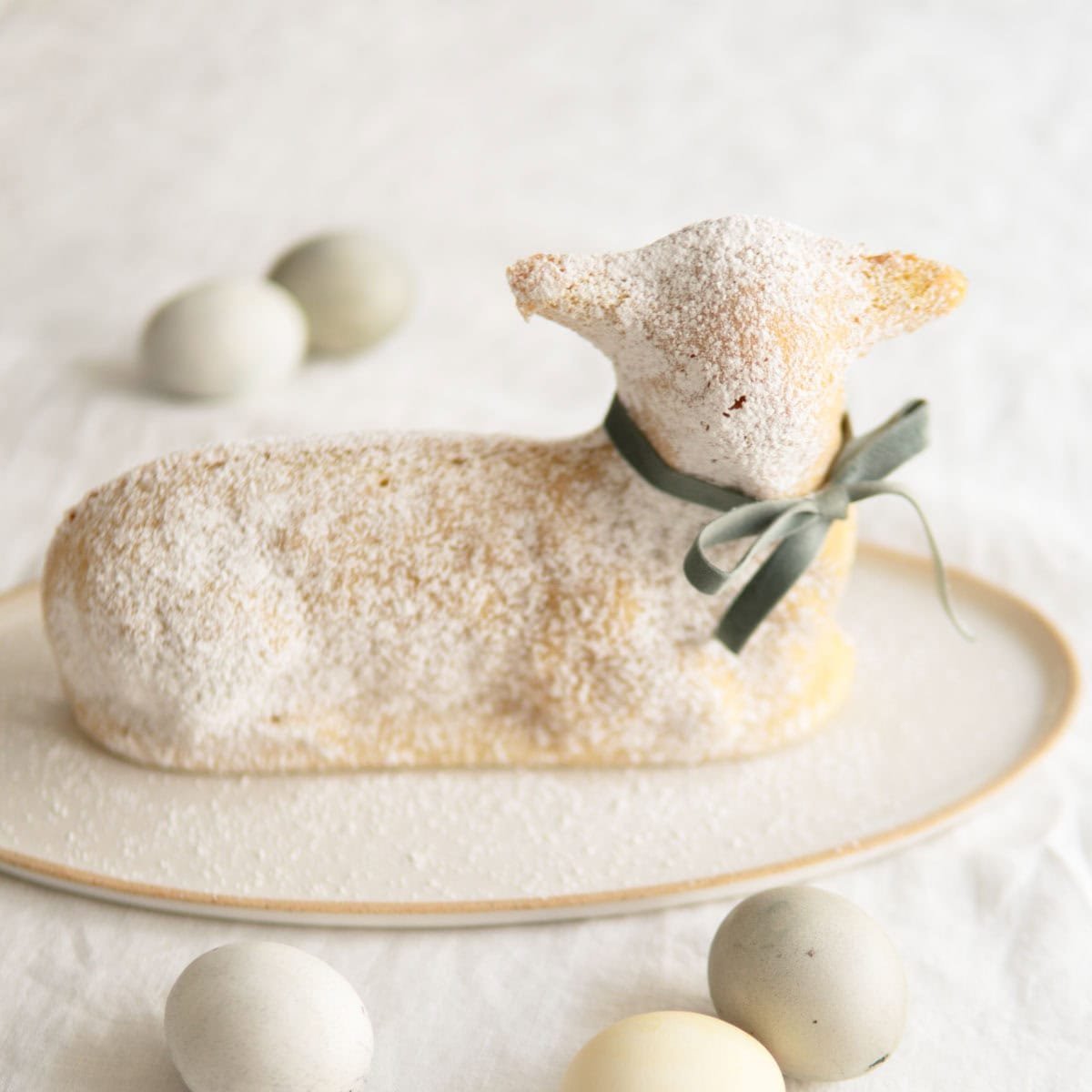
After testing it with a few variations, I came up with this version of my lamb cake recipe, which is super easy to make, bright and lemon-flavored and has a hint of warming rum (although the rum is totally optional).
This authentic German recipe is full of tradition and in case you are not familiar with it, will be a new way to switch it up this Easter. It’s the kind of cake that sparks sweet memories and starts new ones with my own kids.
Jump to:
Why we bake a lamb cake for Easter in Germany
The lamb has long symbolized purity and renewal, making it the perfect centerpiece for celebrating Easter. In Catholic tradition, the lamb represents Jesus, the Lamb of God (Agnus Dei). The Osterlamm is more than just a cute cake. It's a reminder of the deeper meaning behind the holiday.
In many homes across Germany and Austria, you'll find this German cake baked in a lamb-shaped mold and dusted with powdered sugar. Now I will teach you how to bring it into your home, wherever you are in the world.
Why you need this Easter cake recipe
My authentic German lamb cake recipe stays true to the traditional method. It's light, lemony and airy and adds a few personal touches to make it even more special:
A centerpiece on your Easter table. Like my traditional Osterkranz, this Easter lamb cake is a unique way t make your Easter table.
Less sugar. This lamb cake isn’t overly sweet, which makes it a lovely pairing with coffee or a sweeter glaze or dusting.
A bit of spiced rum in the cake batter. It brings warmth and a subtle, nostalgic flavor and something my Oma always did. It's optional in case you don't want to use it.
Light, fluffy texture. The beaten egg whites provide an airy texture that does not feel too heavy.
These little details make all the difference and help this Easter cake stand out while still keeping it easy, authentic, and true to German tradition.
Ingredients
The ingredient list for this authentic German recipe is simple, with just a few pantry staples and a couple of standout flavors. You’ll find exact amounts in the recipe card below, but here’s a quick glance:
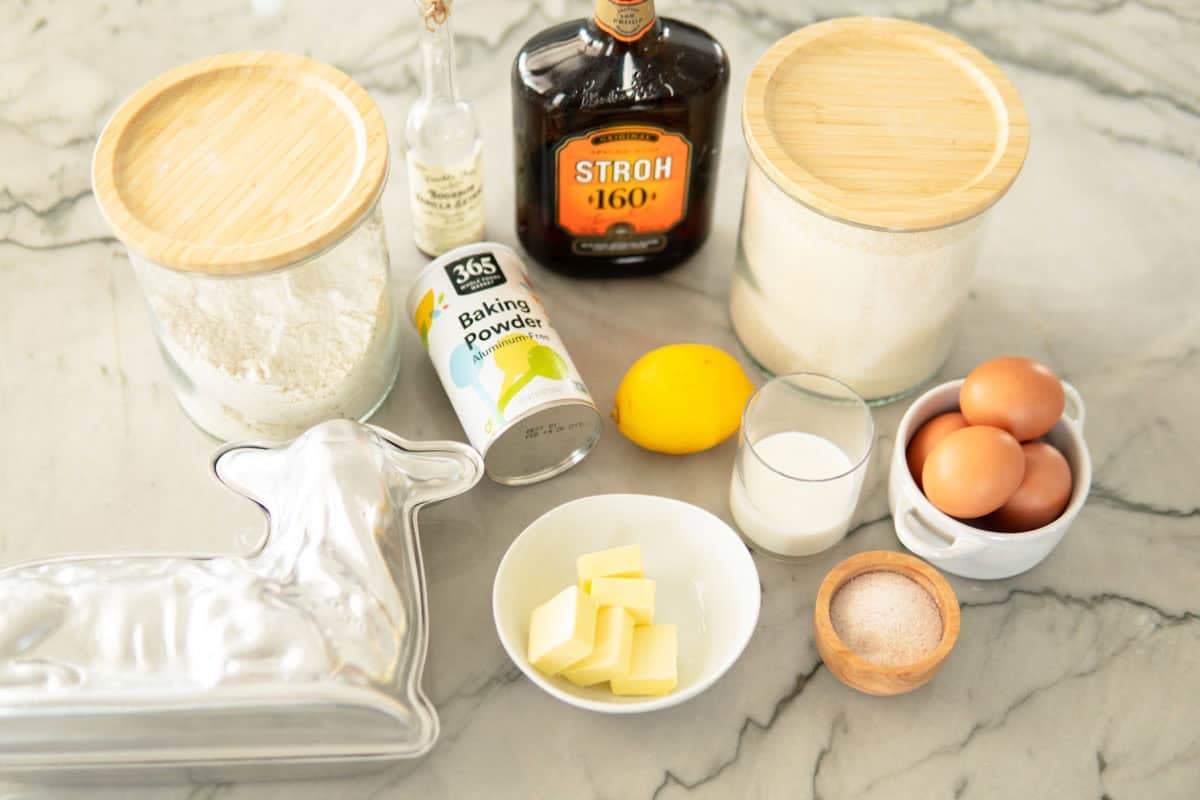
- Butter. Use unsalted, softened butter to create a rich and tender crumb.
- Sugar. Regular granulated sugar gives this cake just the right amount of sweetness without being overly sweet.
- Vanilla Extract. Adds depth and a cozy, familiar aroma. Opt for real vanilla if you can.
- Lemon Zest. Freshly grated zest adds a bright and subtle citrus flavor that is perfect for spring. I always choose organic lemons when using the zest.
- Spiced Rum. I love using Austrian STROH rum, just like my Oma did. It adds a warm, nostalgic touch and makes the flavor pop. Any spiced rum will work in this recipe, but you can also leave it out.
- Eggs. Whipping the whites separately from the yolks gives the cake its signature airy texture.
- Sea Salt. A small pinch enhances all the flavors. Don’t skip it!
- Flour. I adjusted my German baking recipes to use all-purpose flour, making it super easy for you.
- Baking Powder. This helps the lamb cake rise nicely to fill out the mold.
- Milk. Either whole or 2 percent milk will work in this recipe.
How to make an Osterlamm cake
This Easter cake recipe is simple and quick to prepare, especially if you have a stand mixer. It bakes in just over half an hour! See the recipe card for a detailed instructions.
Step 1: Preheat & Prep
Heat your oven to 310°F (155°C) convection (Umluft) or 355°F (180°C) conventional (Ober-/Unterhitze). Butter and flour your lamb cake mold.
Step 2: Cream Butter & Sugar
In your stand mixer, beat the softened butter, half the sugar, vanilla, lemon zest, and rum until light and creamy.
Step 3: Add Egg Yolks
Add one egg yolk at a time, mixing well after each.
Step 4: Beat Egg Whites
In a separate bowl, beat the egg whites with salt until soft peaks form. Add the remaining sugar and beat to stiff peaks.
Step 5: Combine
Sift together flour and baking powder. Add to the butter mixture, alternating with milk and egg whites. Stir in using a rubber spatula, until just combined.
Step 7: Bake
Pour the batter into the bottom half of the lamb cake mold, attach the top with the vent hole, and bake on a tray for about 30 minutes. Use a toothpick through the vent to check doneness. Crumbs are good, raw batter is not.
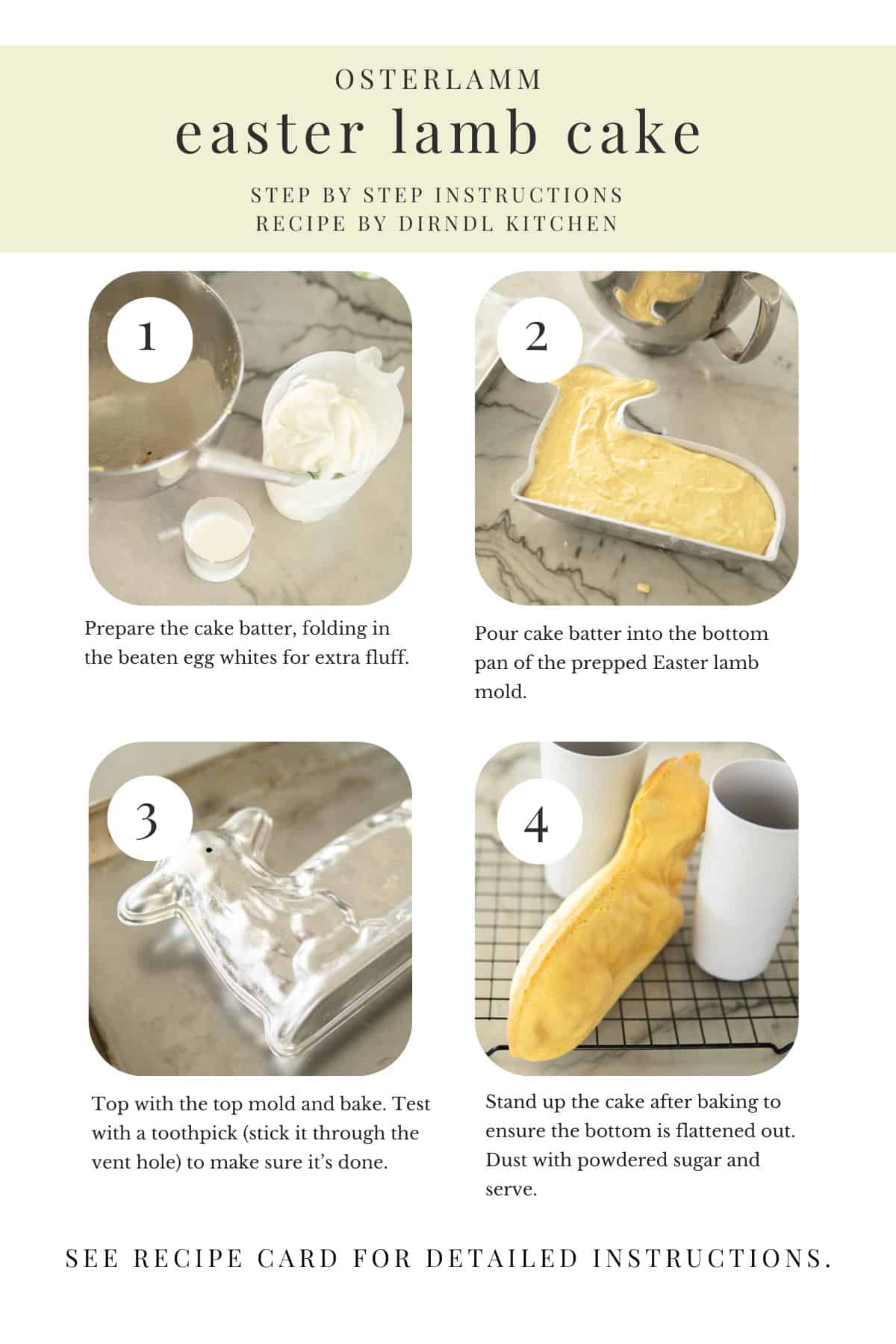
How to serve & store your Easter lamb cake
Once your Osterlamm has cooled slightly, remove it from the pan and stand it up on a cooling rack. I place tall glasses or cups on both the front and the back side to support it while it sets up.
Once set up, lay it on its back and give it a generous dusting of powdered sugar. Stand it back up, transfer to a platter and serve it as a stunning centerpiece.
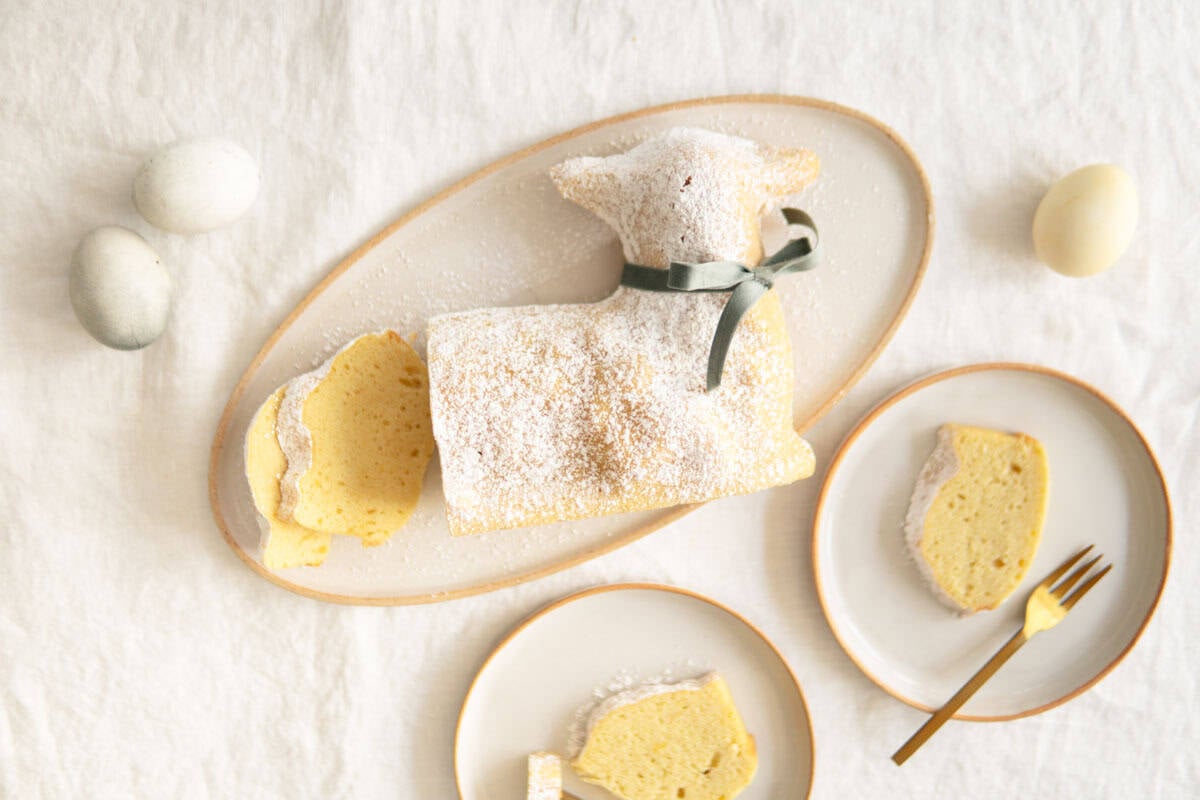
Complete your German Easter celebration with more German recipes like my Osterkranz (Easter bread), moist and nutty Rüblikuchen (Swiss Carrot Cake), the boozy and festive Eierlikörkuchen (German Egg Liqueur Cake), or a fruity and light Strawberry Cream Cake (Erdbeerboden).
This German cake keeps well at room temperature under a dome or wrapped in plastic for 2 to 3 days, or refrigerated for up to a week. It's perfect for making ahead the day before Easter for a quick and easy celebration.
Frohe Ostern & don’t miss a recipe!
If this Easter cake brought some joy to your kitchen, I’d love for you to subscribe to my newsletter for more authentic German recipes, seasonal traditions, and behind-the-scenes stories straight from my German-American kitchen.
Whether you’re looking for more of my favorite German Easter recipes or want to dive into my complete German Easter Recipe Collection, I've got you covered.
Frohe Ostern and have fun baking your Osterlamm this Easter!

Traditional German Lamb Cake Recipe (Osterlamm)
Equipment
- 1 Stand Mixer I love mine for mixing the batter for this recipe, but a hand-held mixer will work great too.
- 1 Easter lamb mold This is the exact one I use and have tested with this recipe. This mold will work as well, but is a little bit smaller, so you may have batter oozing out the sides.
Ingredients
- 70 grams butter unsalted butter, plus more for rubbing on the cake pan to prep it
- 175 grams granulated sugar
- 2 grams pure vanilla extract
- 1 lemon zest only, I always use an organic lemon when using the zest.
- 1 tablespoon spiced rum I like using STROH rum, but any spiced rum will work. You can also leave it out.
- 4 eggs size US large, yolks and whites separated
- 1 pinch sea salt
- 180 grams all-purpose flour plus more for dusting the cake pan to prep it
- 5 grams baking powder
- 60 milliliters milk 2% or whole milk
- powdered sugar for dusting the cake after it has cooled
Instructions
- Preheat your oven to 310 Fahrenheit/155 Celsius on the convection setting (Umluft), or 335° Fahrenheit/ 170° Celsius on the conventional setting (Ober-/Unterhitze).
- Using your paddle attachment of a stand mixer, beat the soft butter with ½ cup (100 grams) of the sugar and the vanilla extract, lemon zest and the spiced rum until creamy, about 3 minutes.Scrape down the sides of the bowl using a rubber spatula.70 grams butter, 175 grams granulated sugar, 2 grams pure vanilla extract, 1 lemon, 1 tablespoon spiced rum
- Gradually add in one egg yolk at a time until combined.4 eggs
- In a separate bowl, using the whisk attachment on a hand-held blender, beat the egg white with the salt until almost stiff. Add in the remaining sugar and beat until stiff.1 pinch sea salt
- Sift your flour and baking powder together, then add to the egg yolk butter mixture, alternating with the milk and beaten egg whites until incorporated.Either use your stand mixer for this step (low setting) or use a rubber spatula. Mix until you see no more visible streaks of fluffed egg white or flour, but be careful not to overmix the batter.180 grams all-purpose flour, 5 grams baking powder, 60 milliliters milk
- Prep your lamb cake pan by rubbing on soft butter and dusting it with flour to create a non-stick surface. This is the only way I can recommend to help the cake not stick to the pan.
- Pour the batter into bottom half of the prepped pan, then top with the top pan (the one with the vent hole).Place on a baking sheet and bake for about 30 minutes or until a toothpick has just a couple of crumbs on it. Insert the toothpick through the vent hole.
- Carefully transfer the cake mold (still assembled) to a cooling rack and allow to cool for 5 minutes before removing the cake from the pan. Stand it up on a cooling rack and place a tall glass on either side of the cake to help hold it up straight as it cools.
- Once cooled, lay it on its back to dust it with powdered sugar. Stand it back up and place it on a serving platter. Dust it with some more powdered sugar and attach an optional decorative ribbon.Optionally serve your Easter lamb cake with lightly sweetened, vanilla-flavored whipped cream and fresh berries.powdered sugar

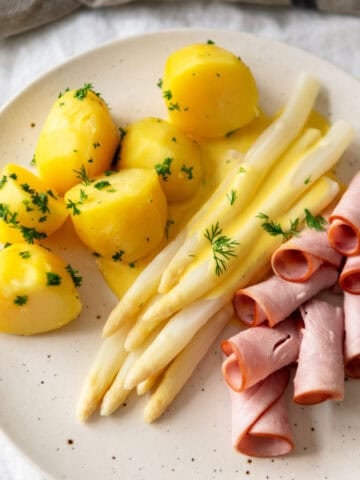
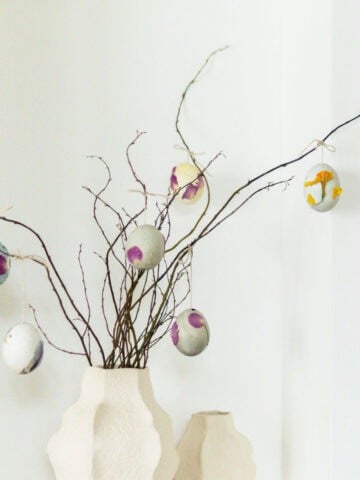
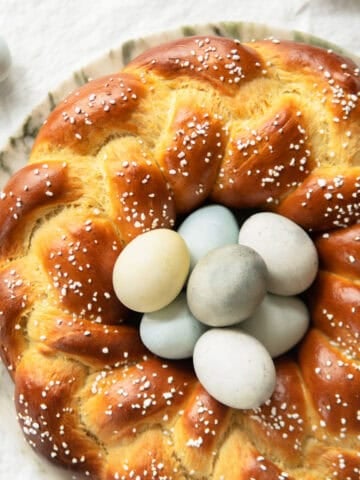
Leave a Reply